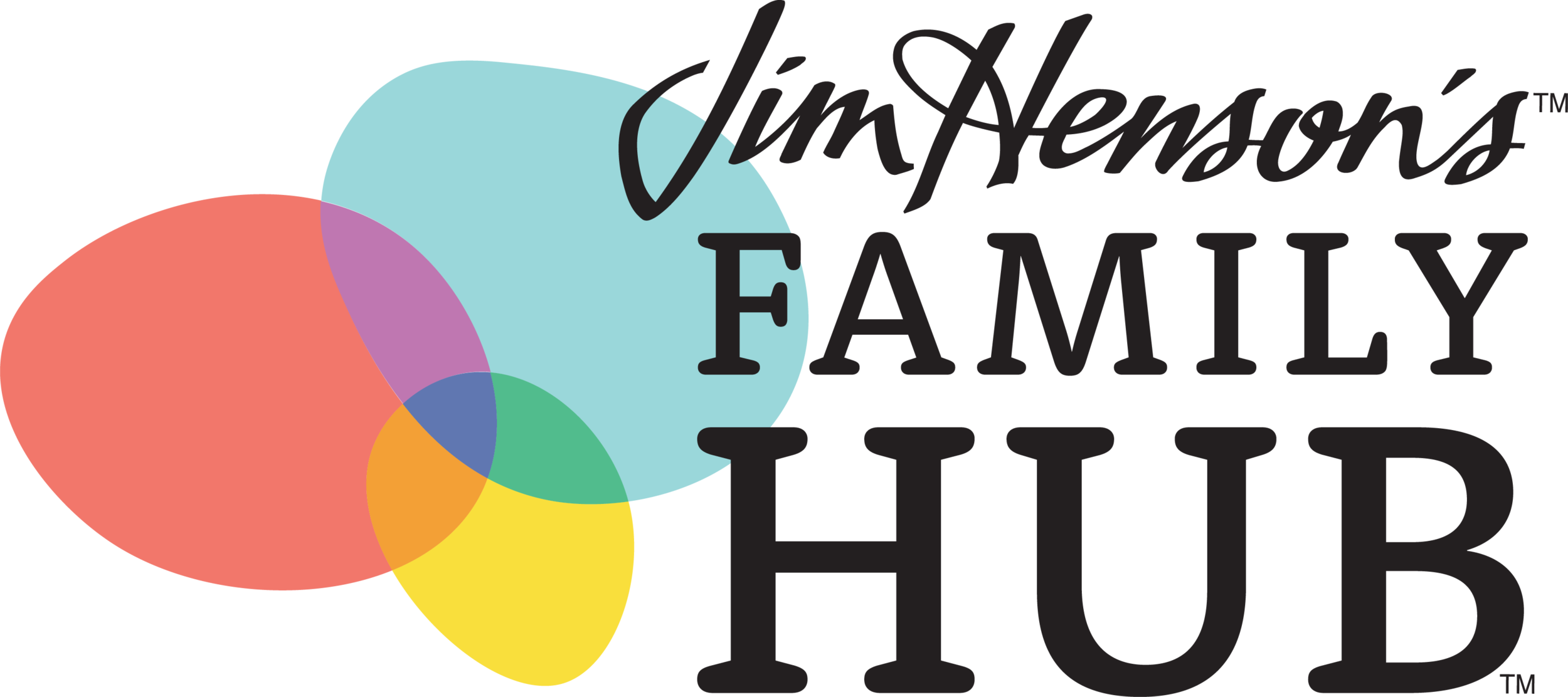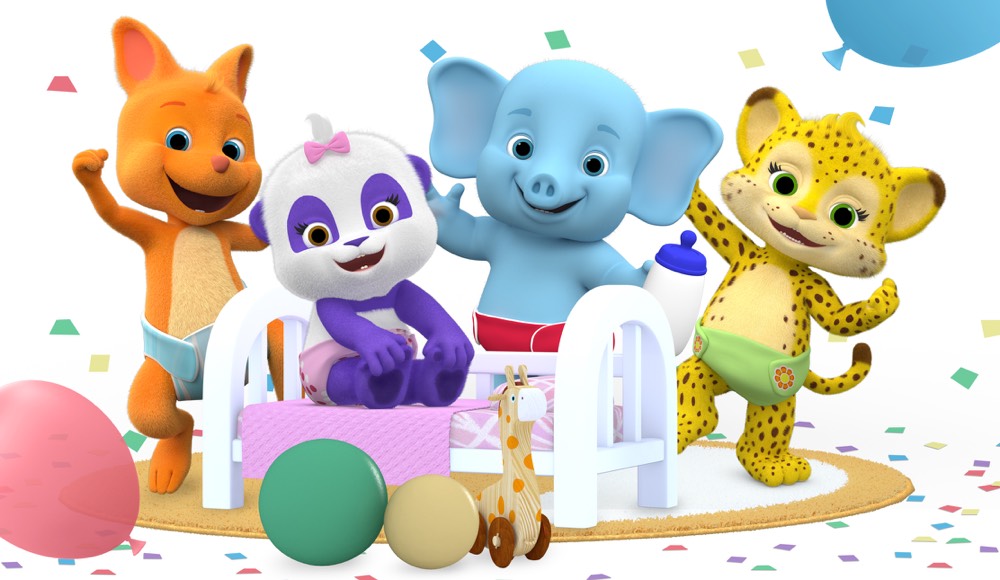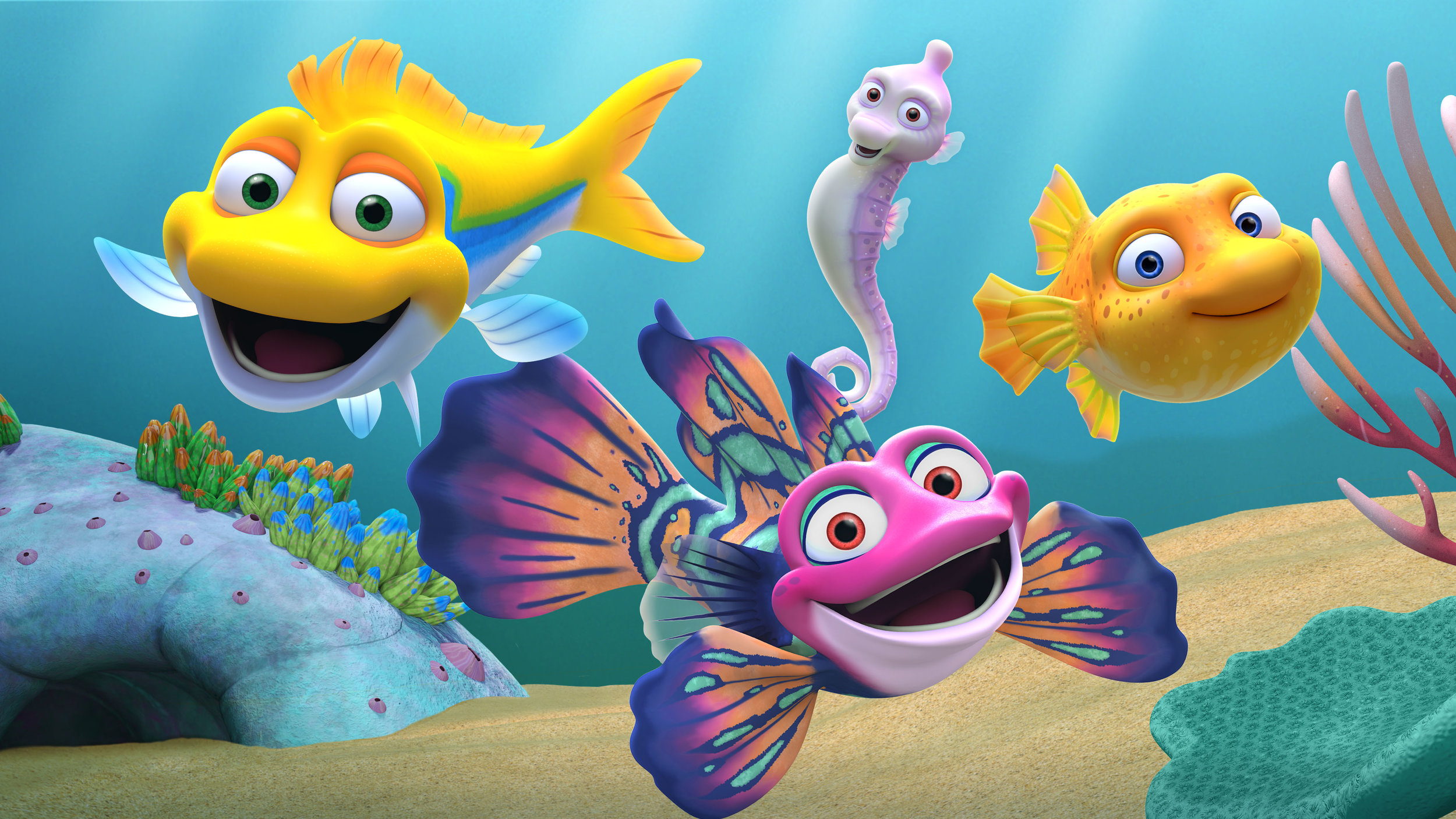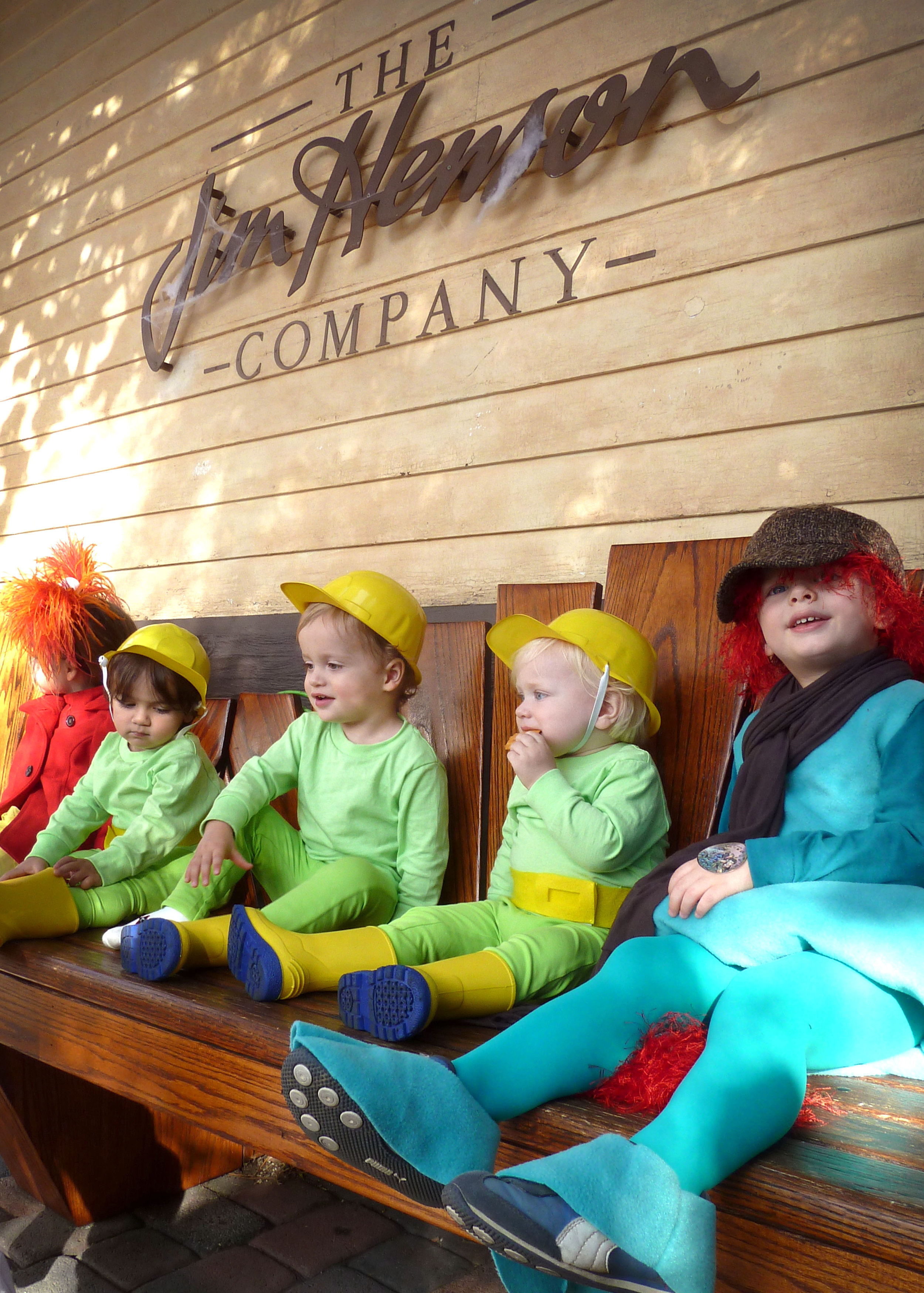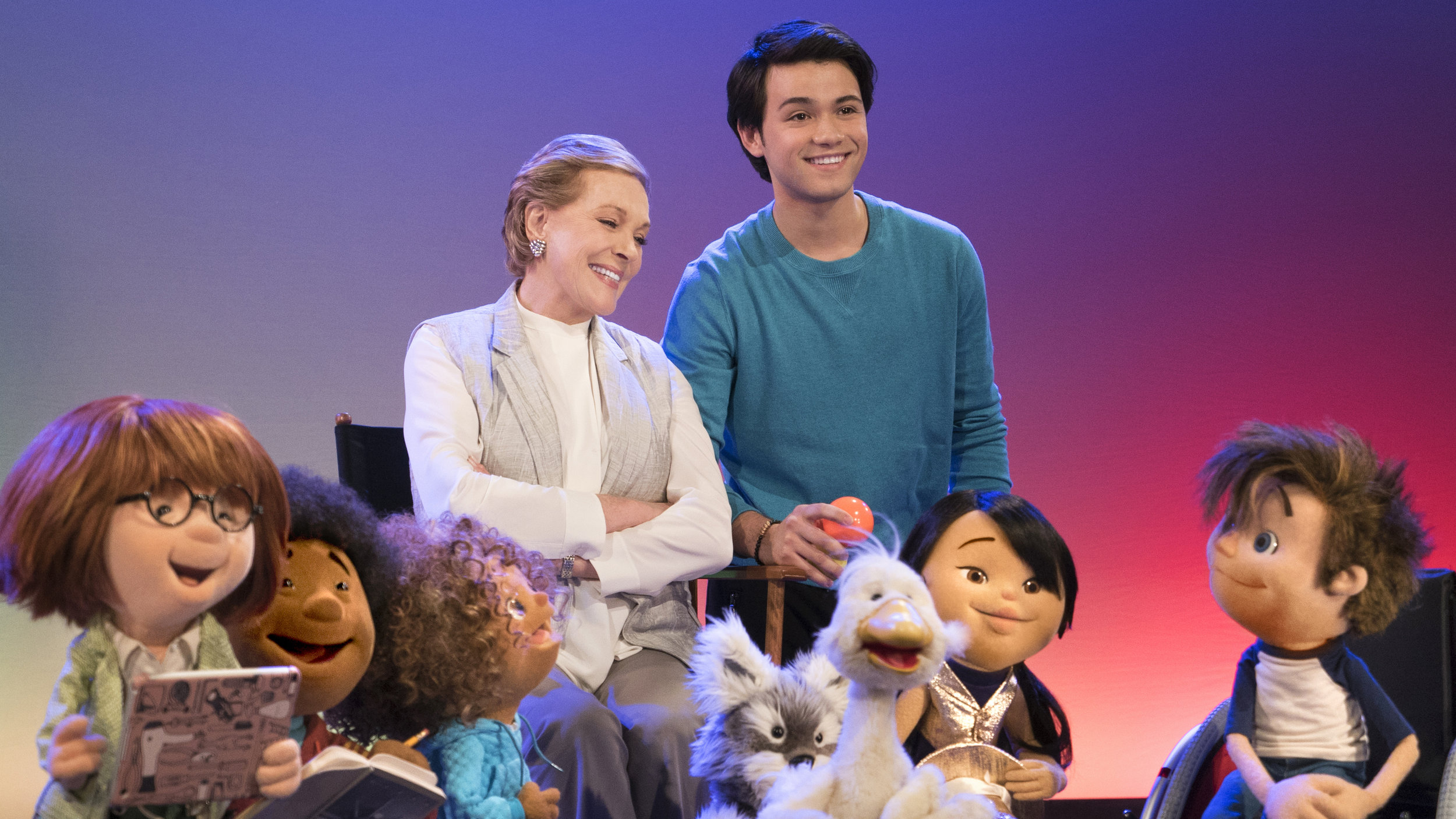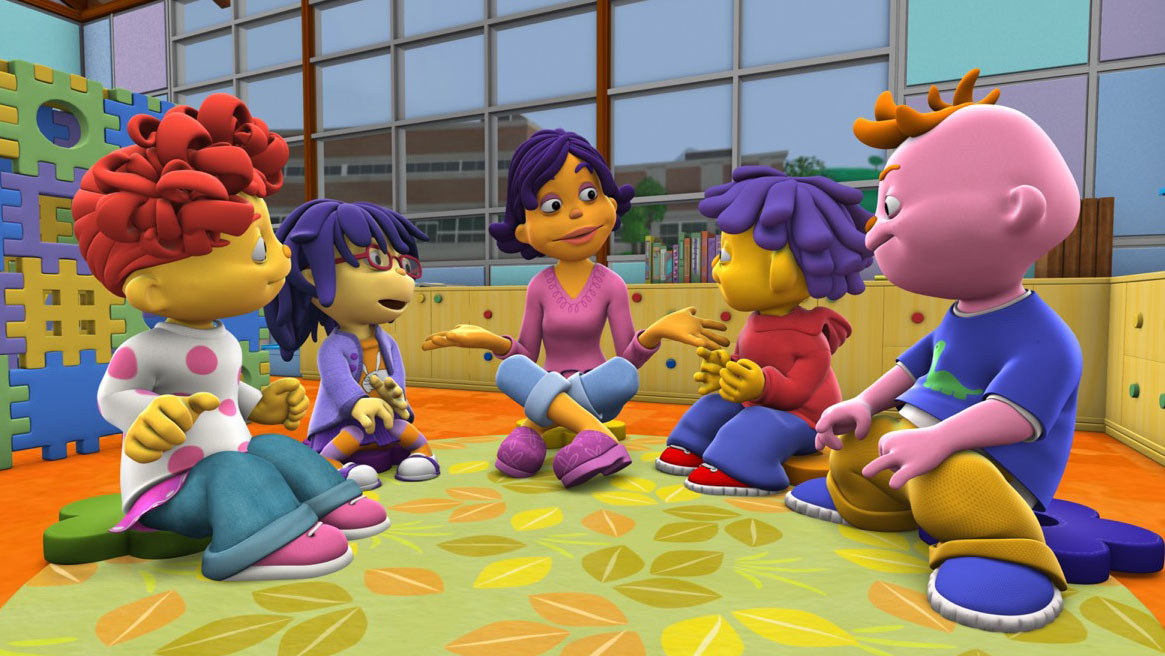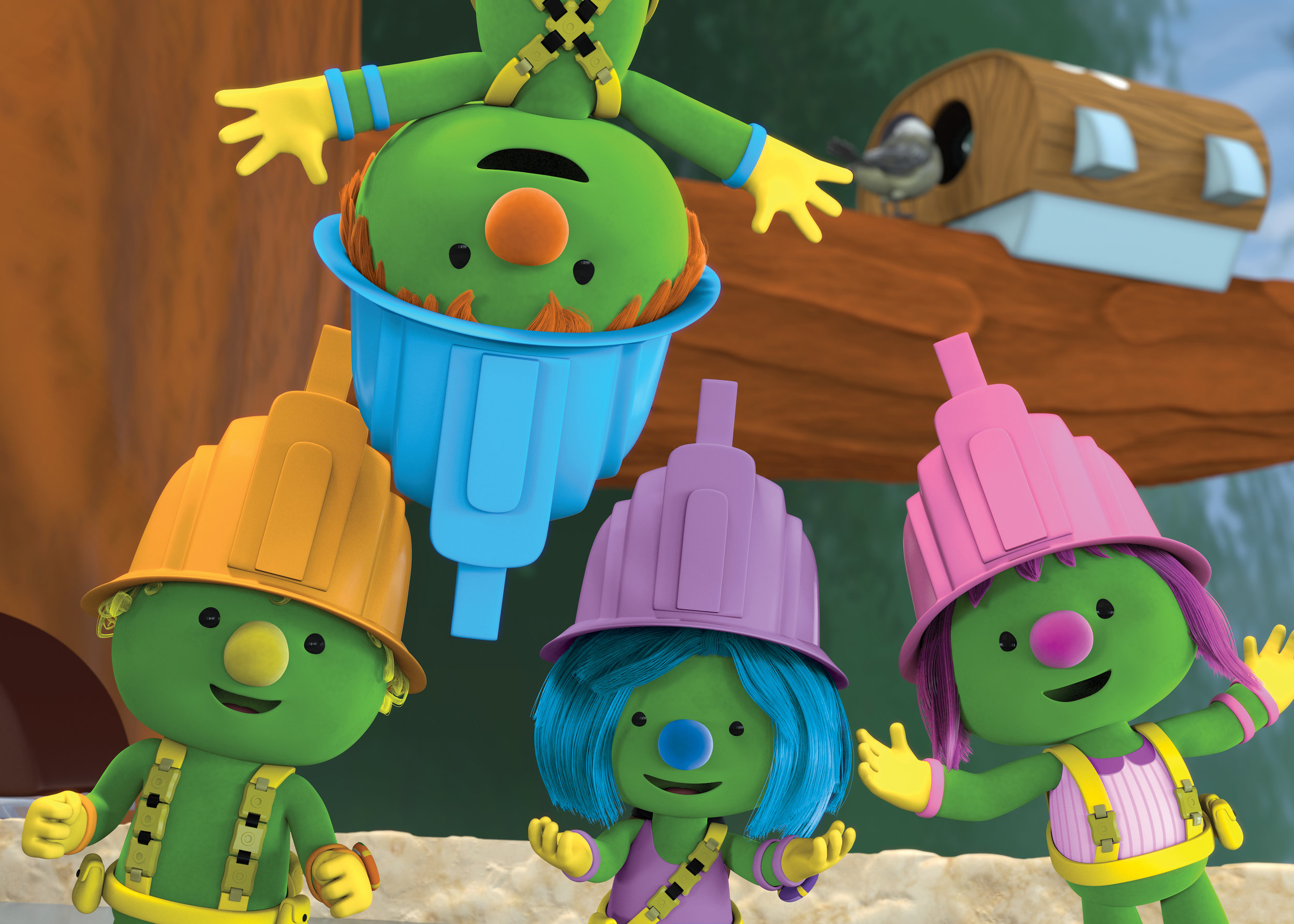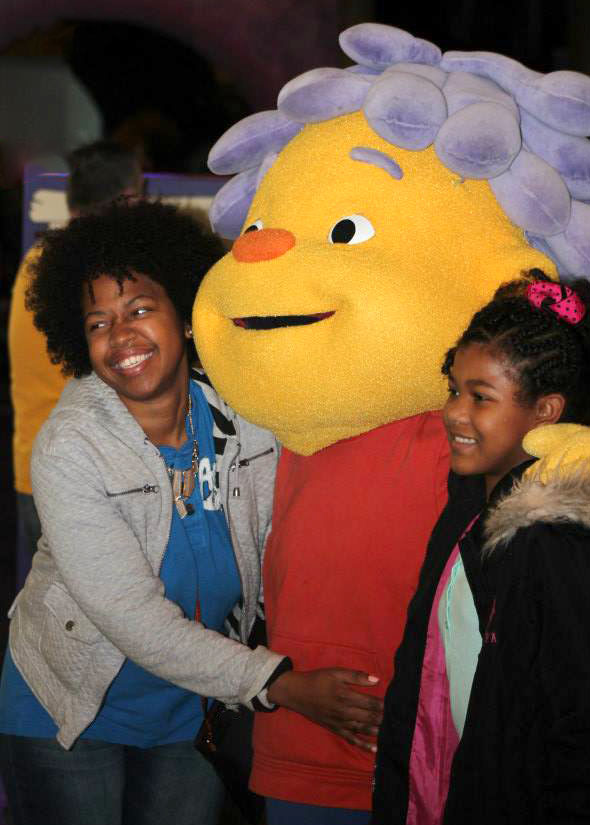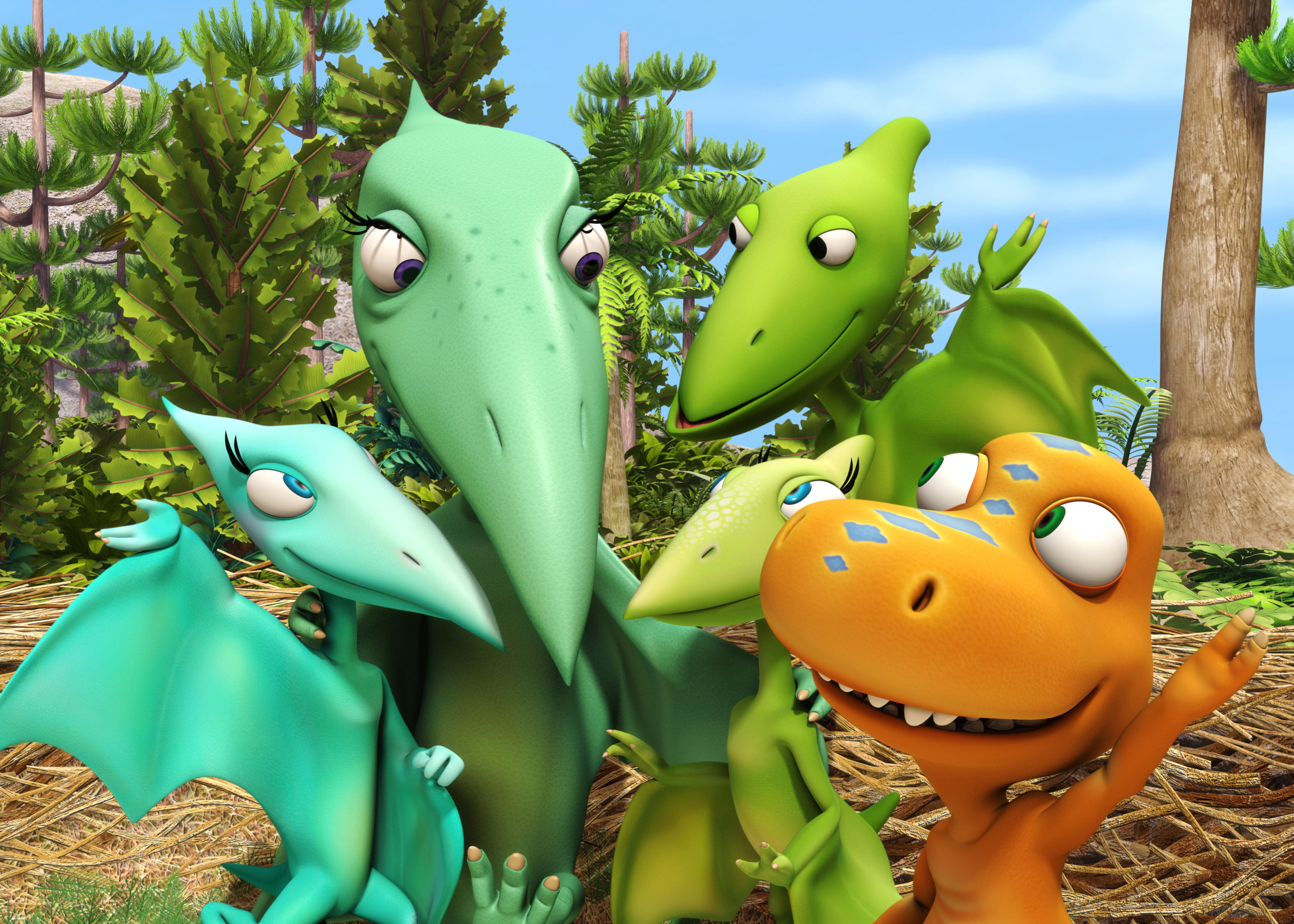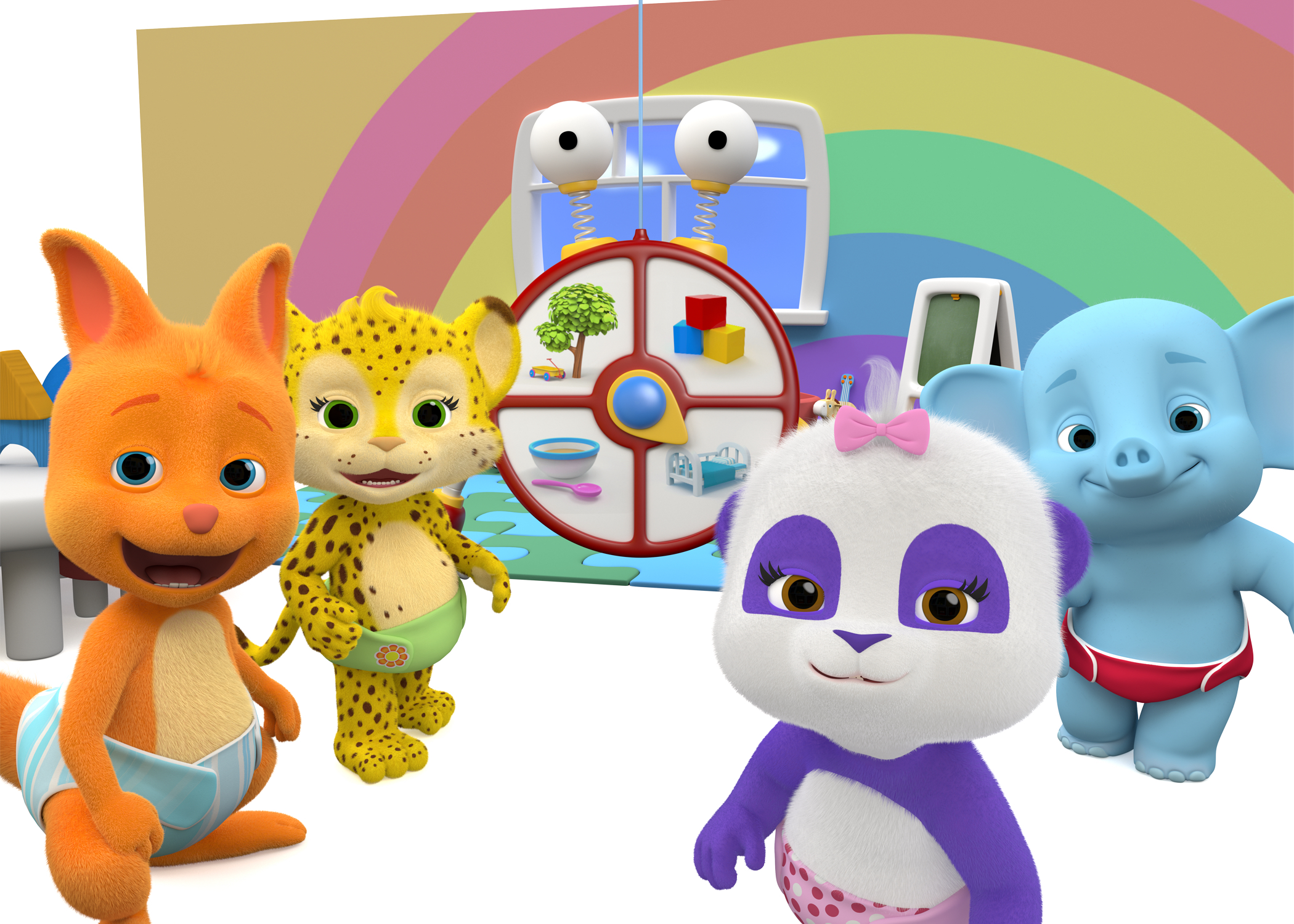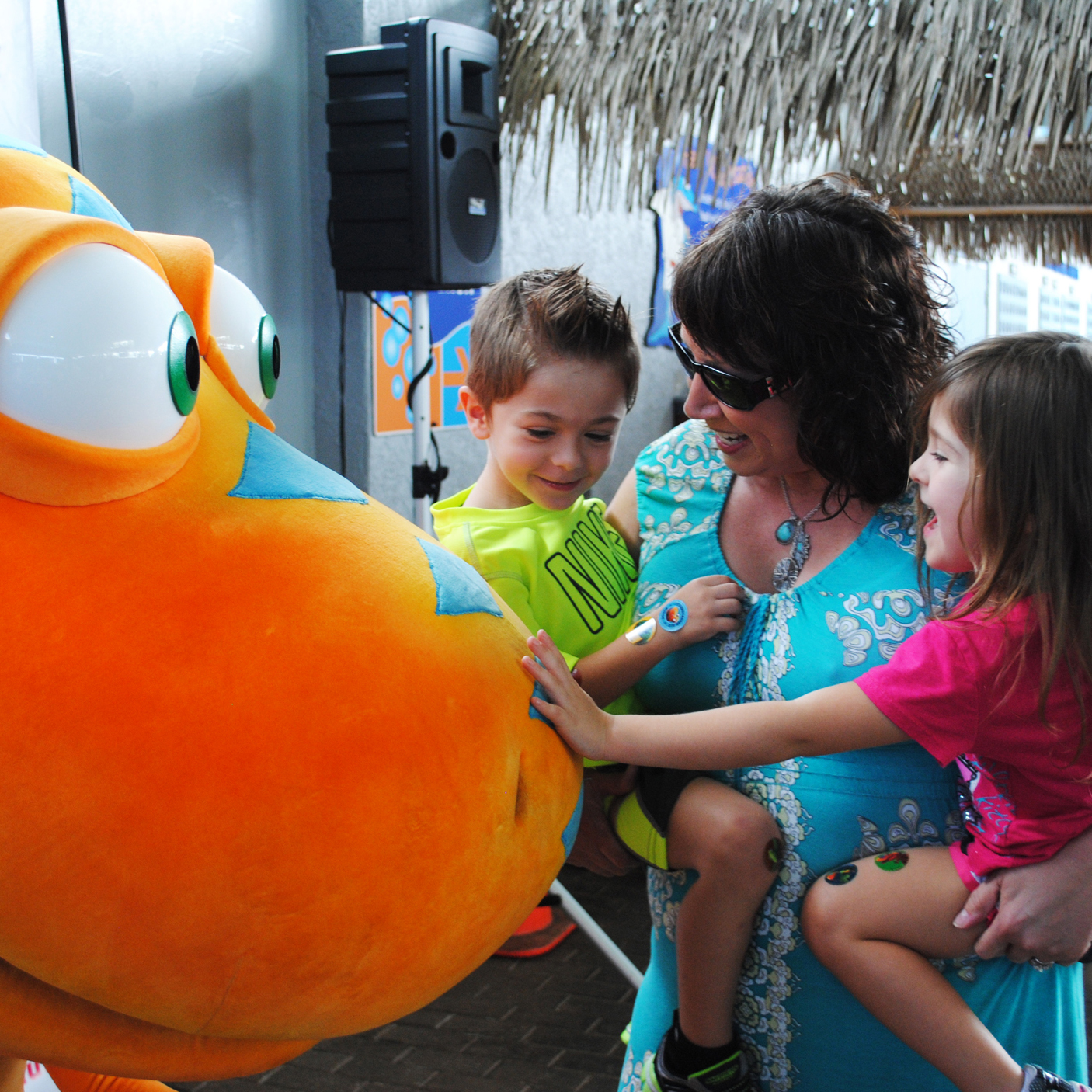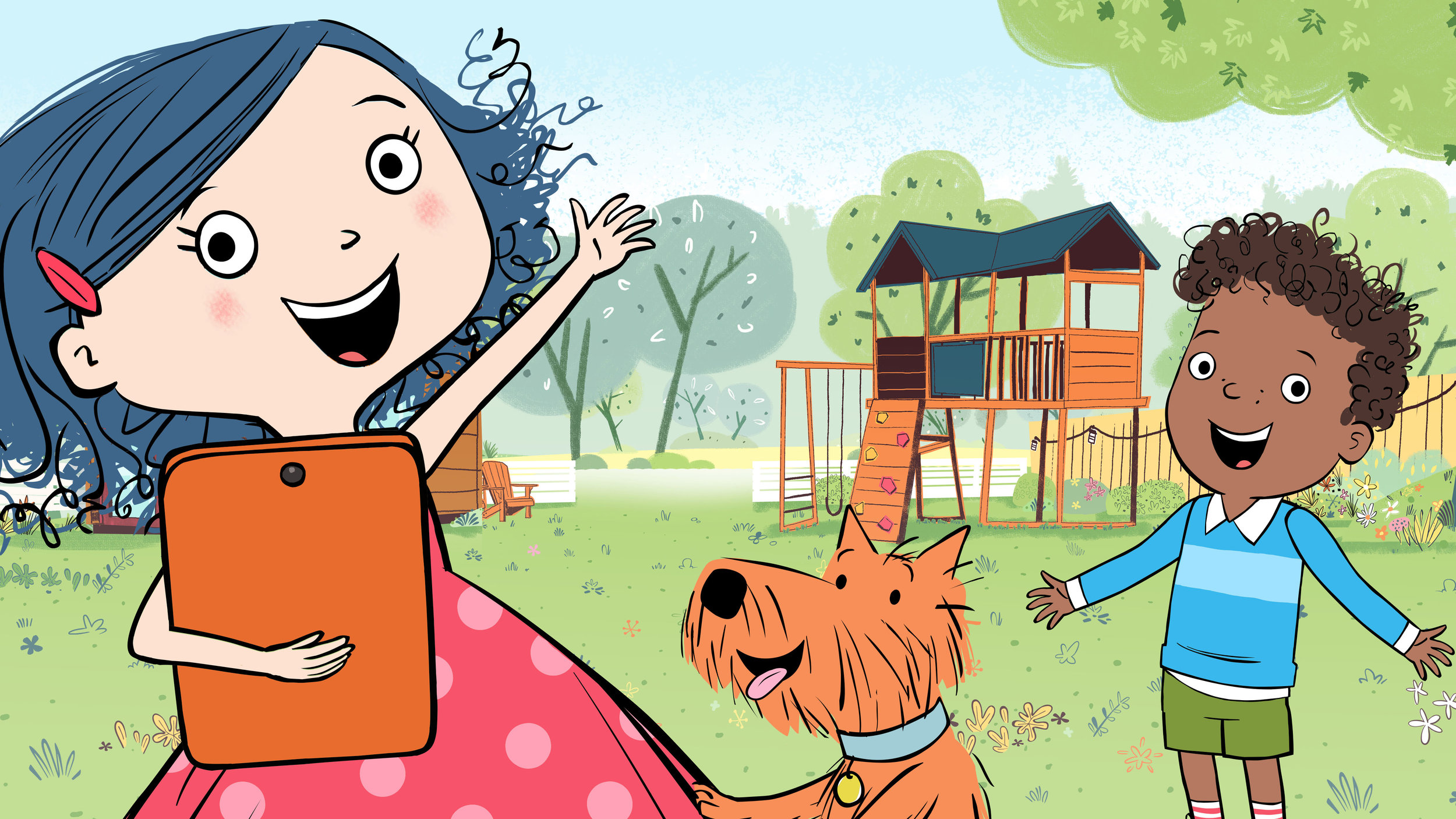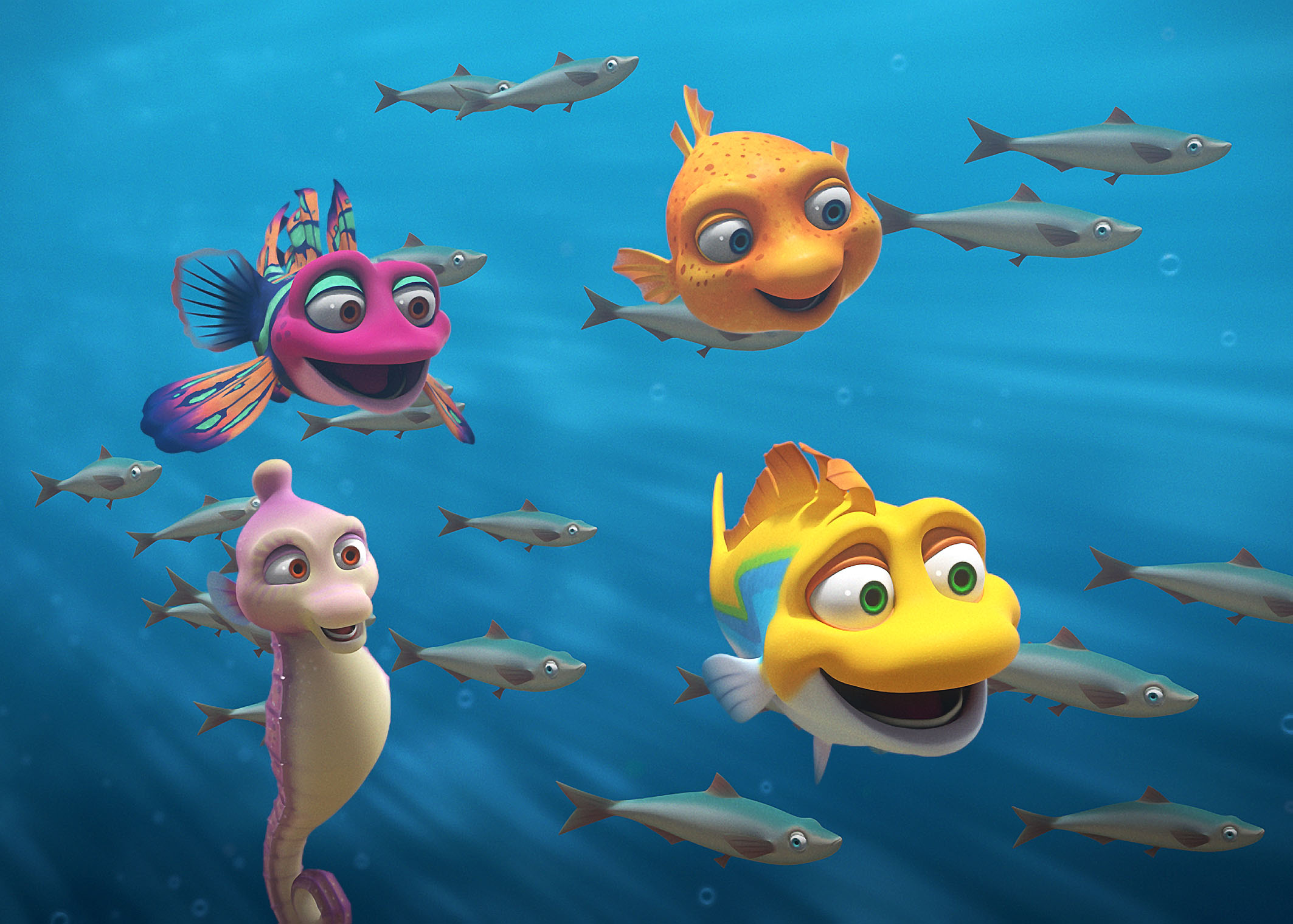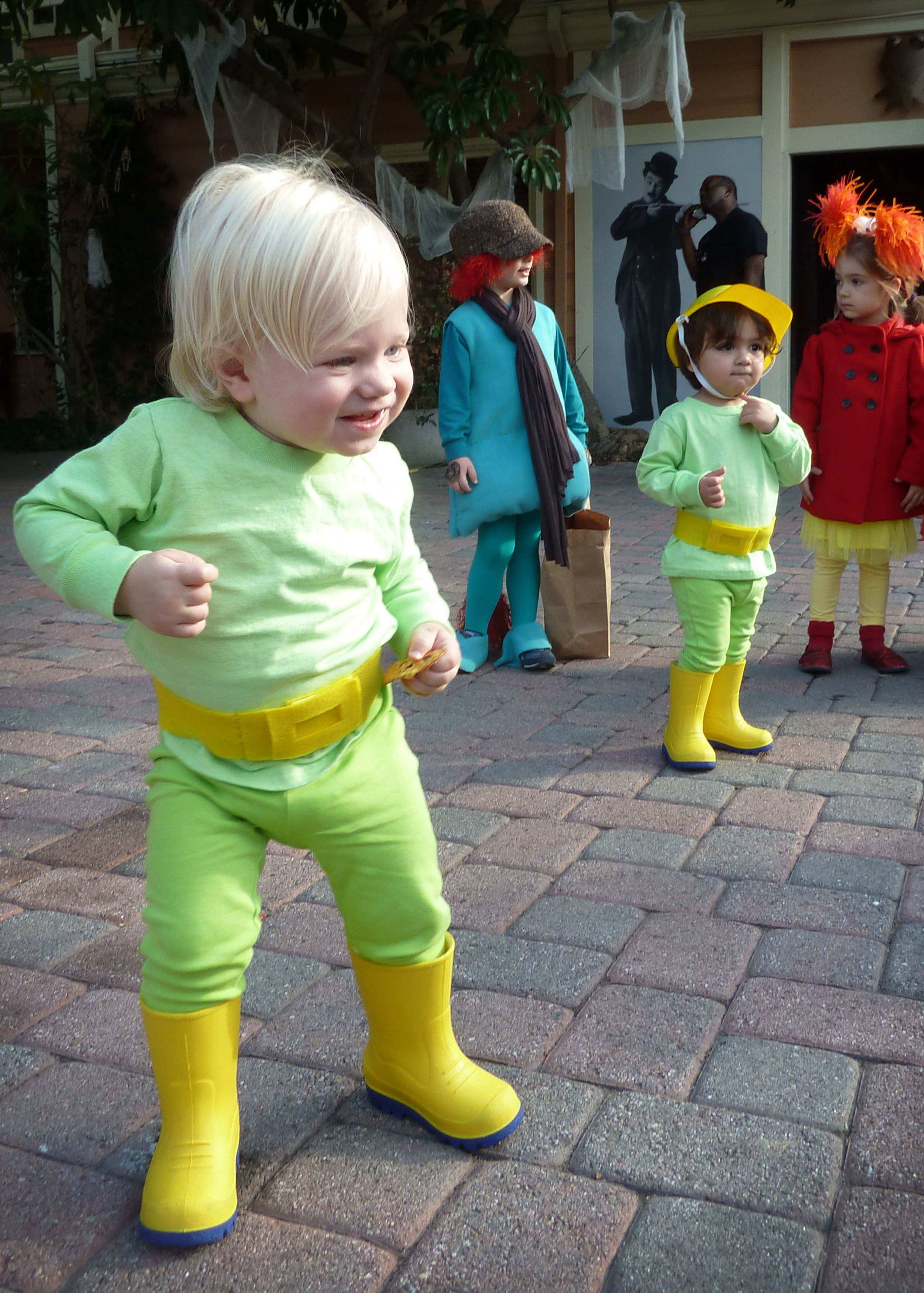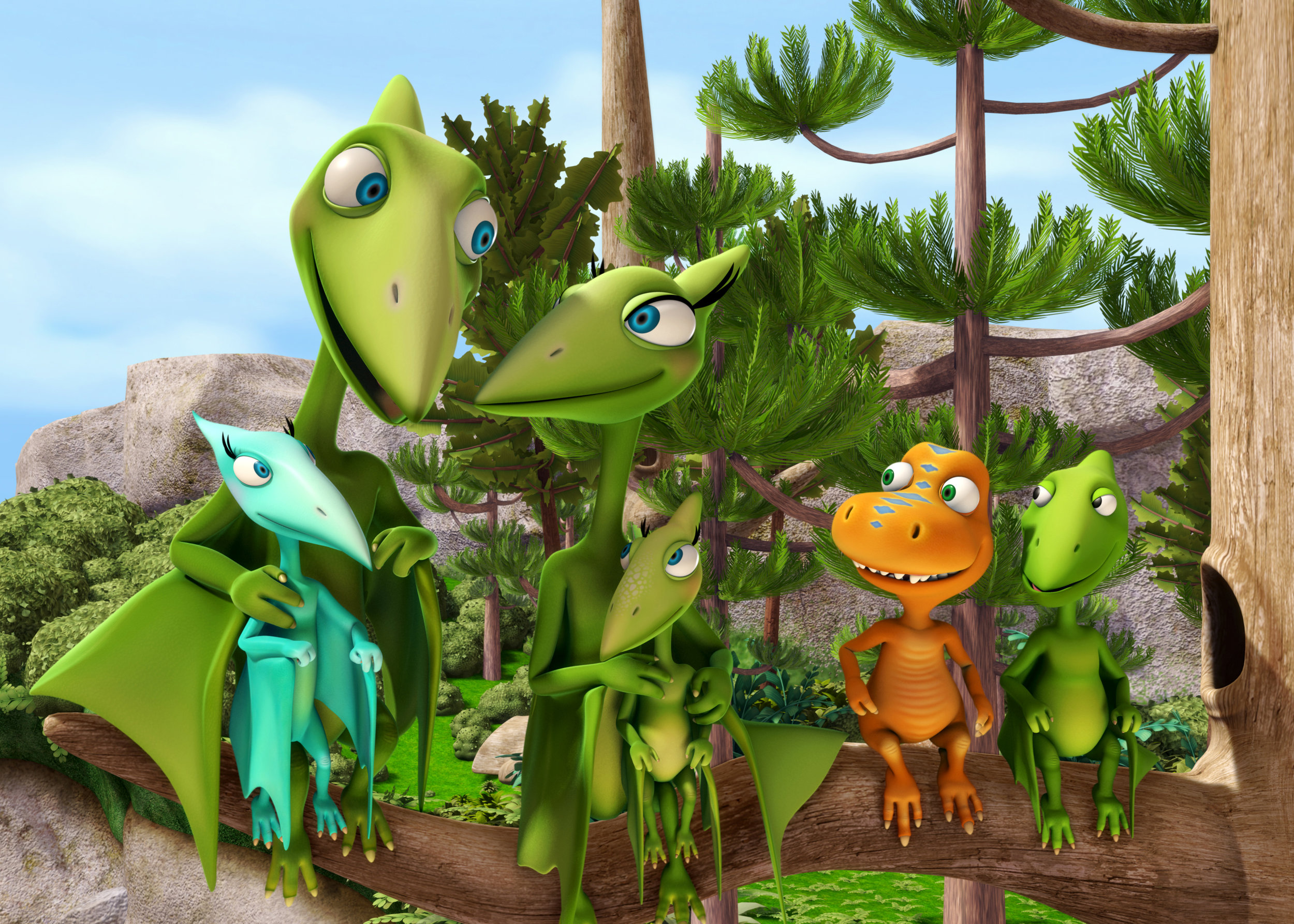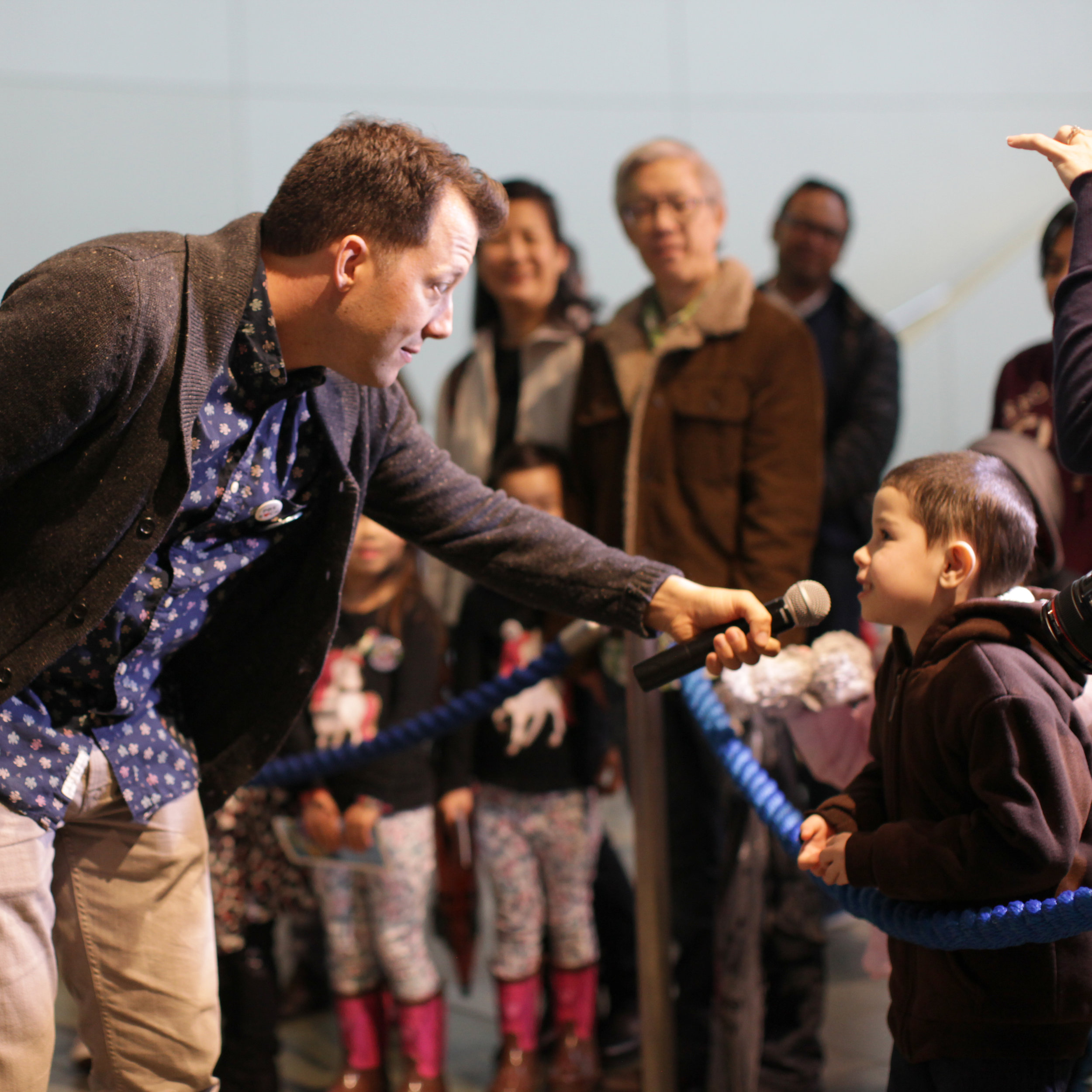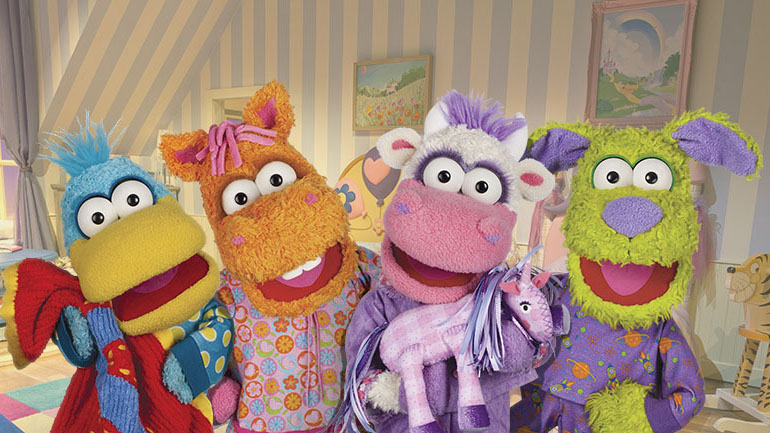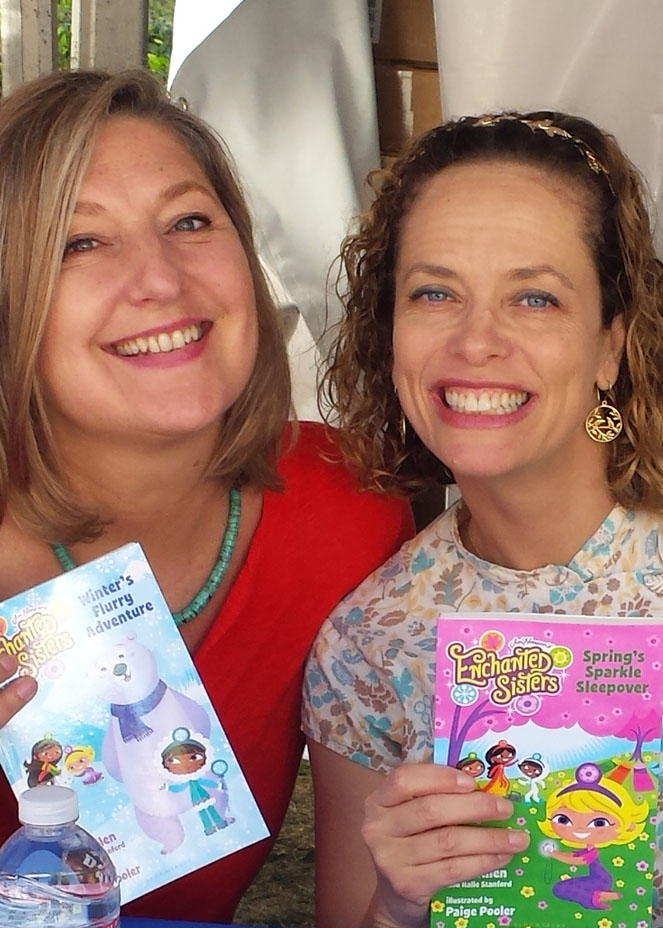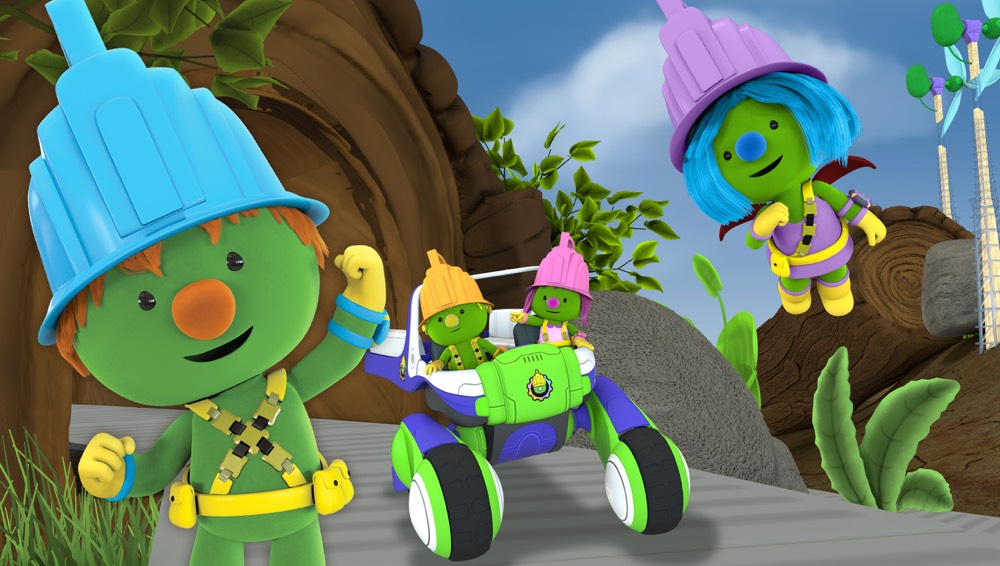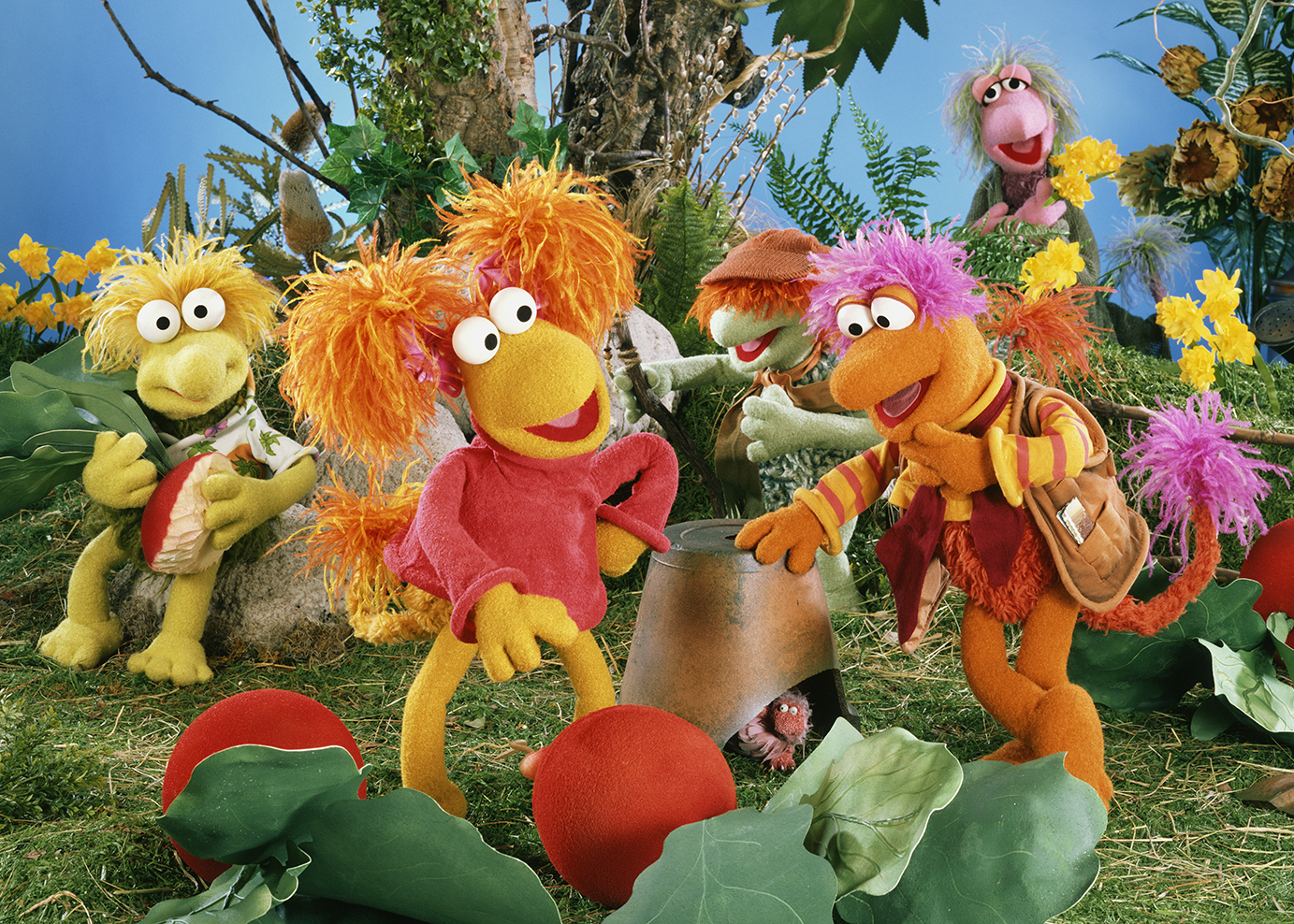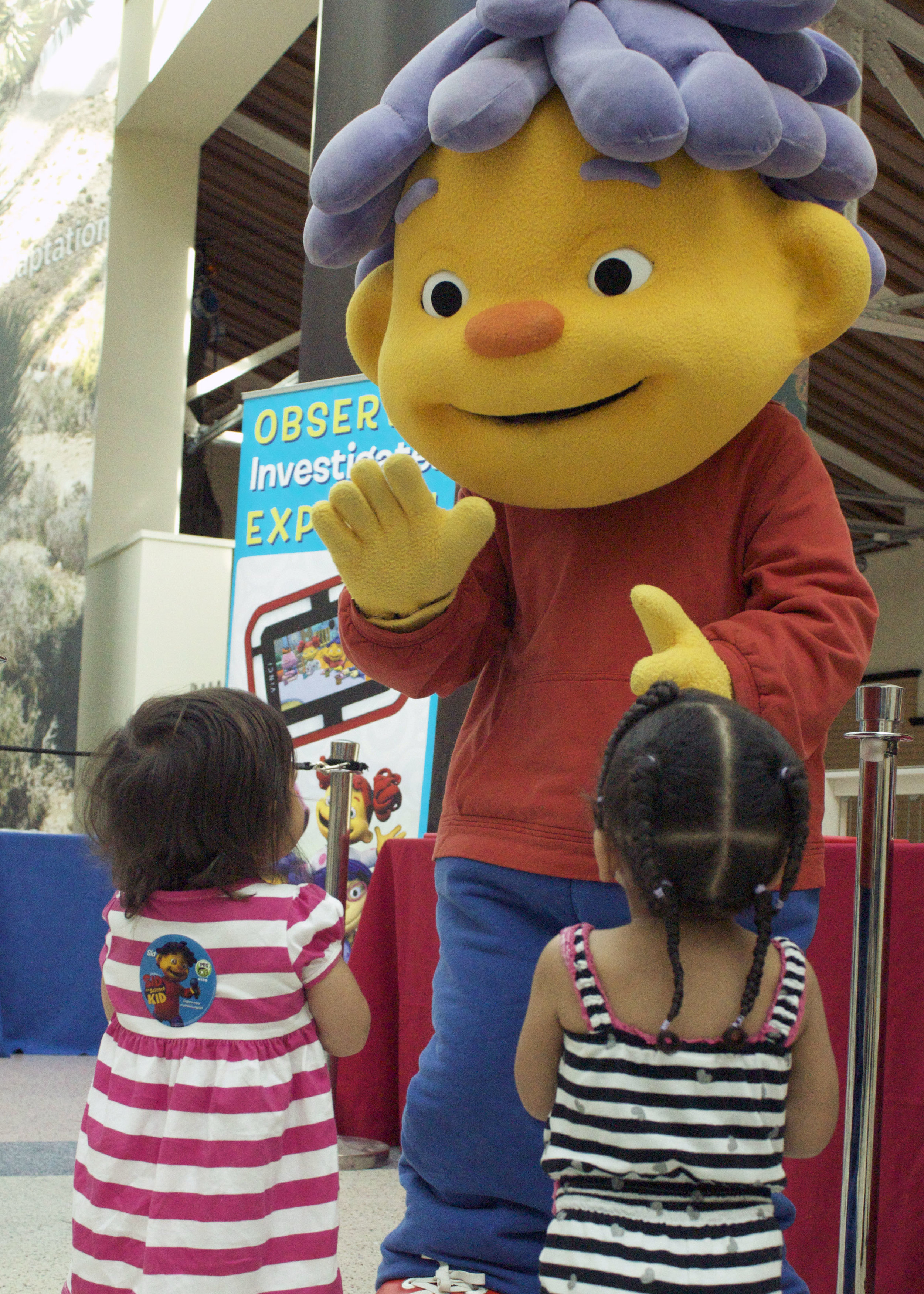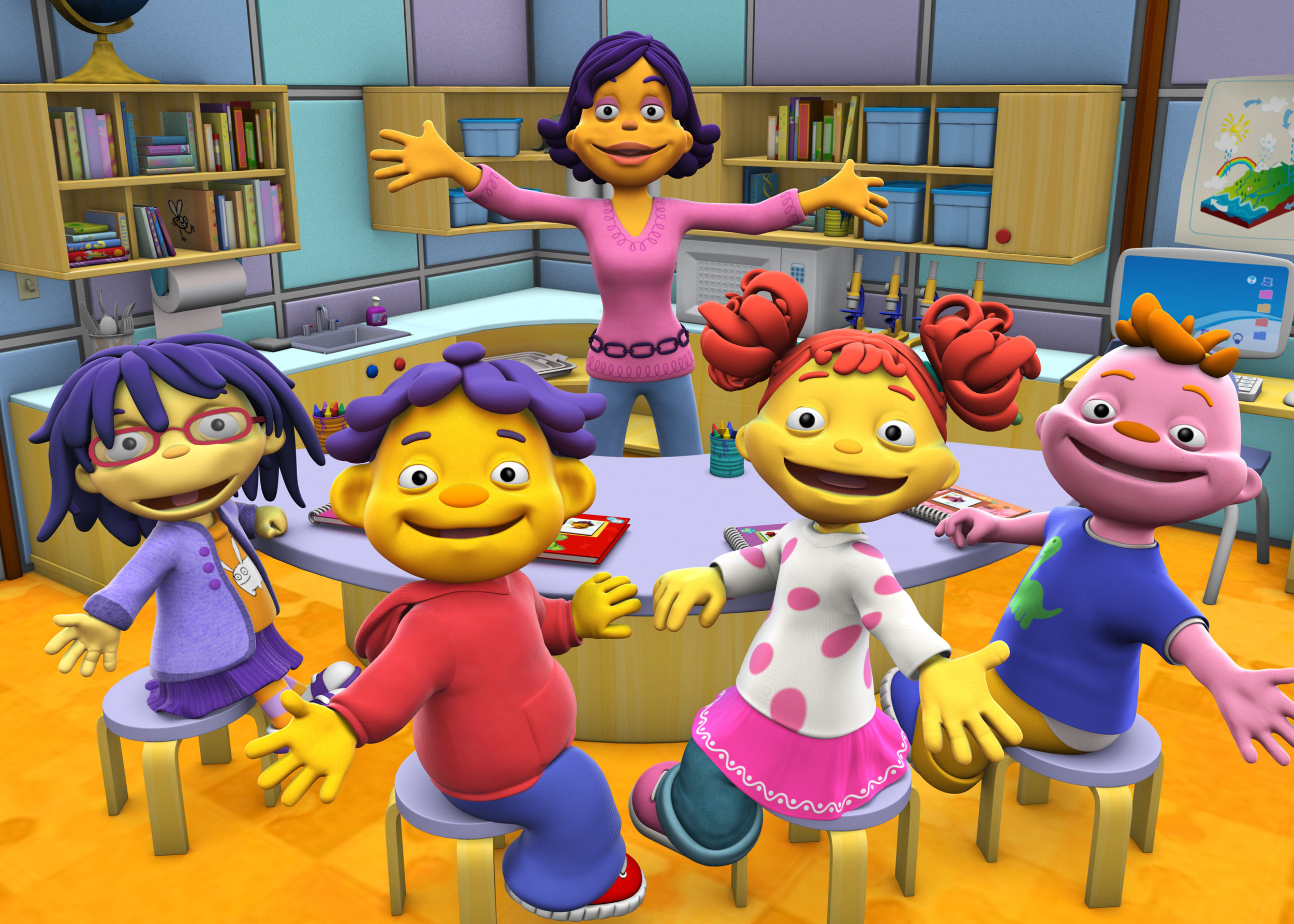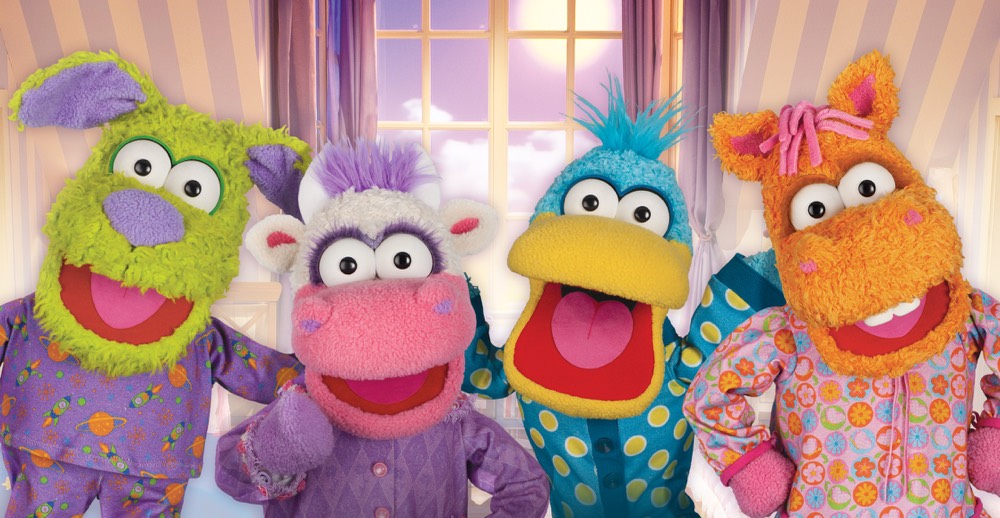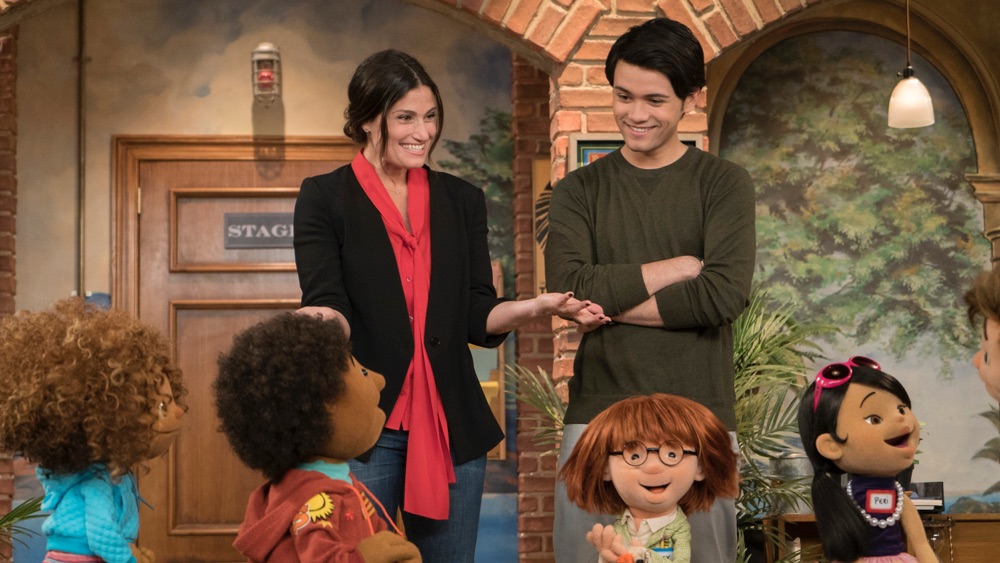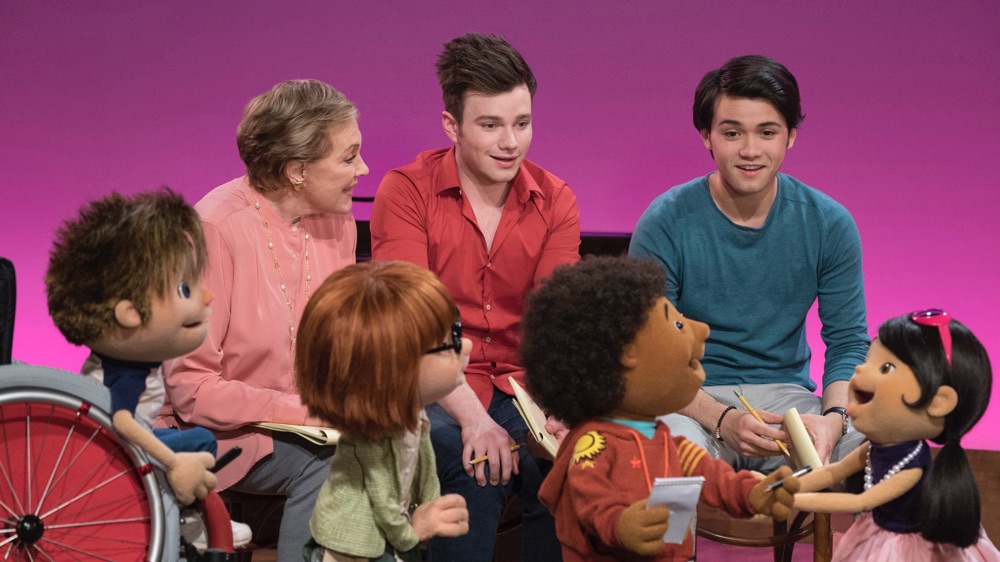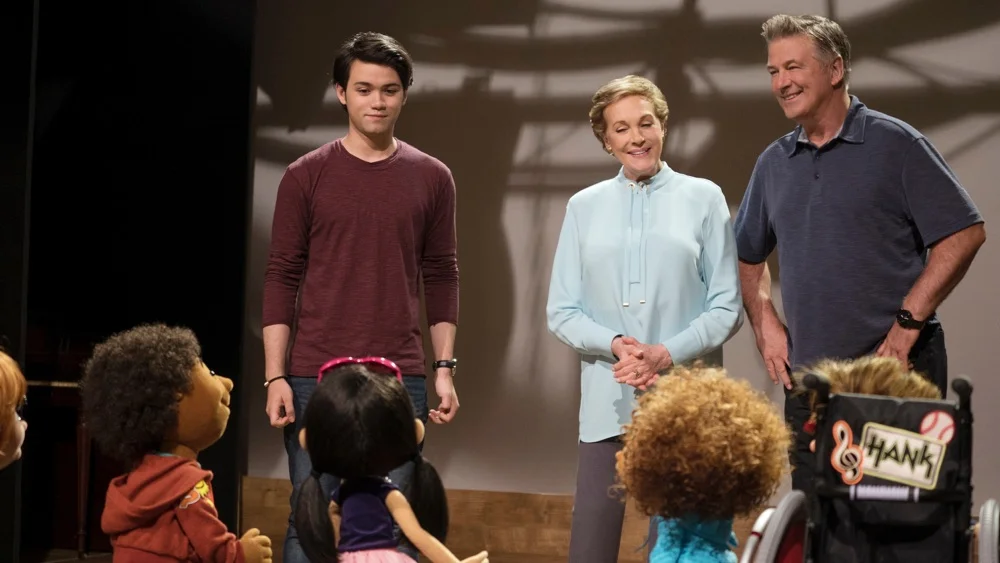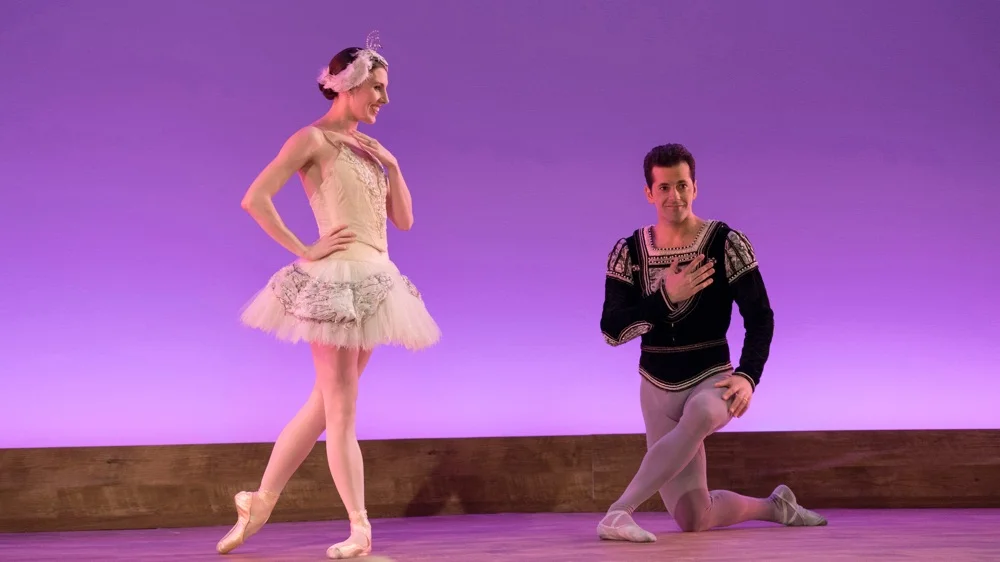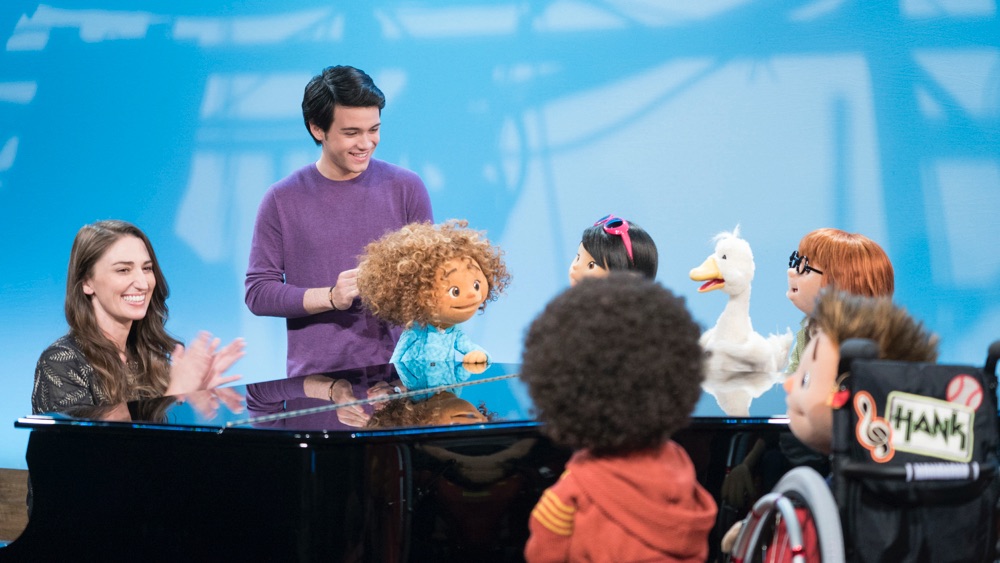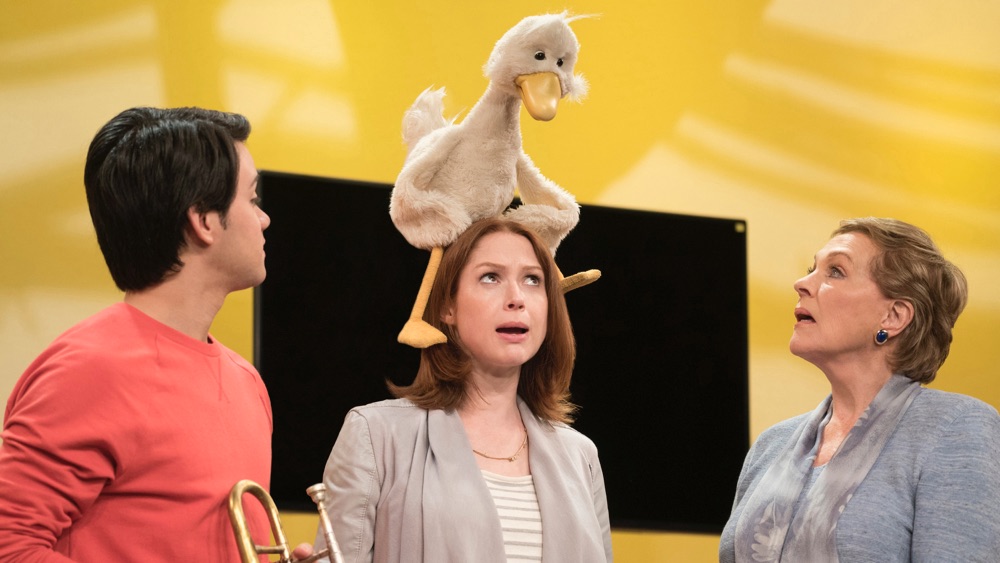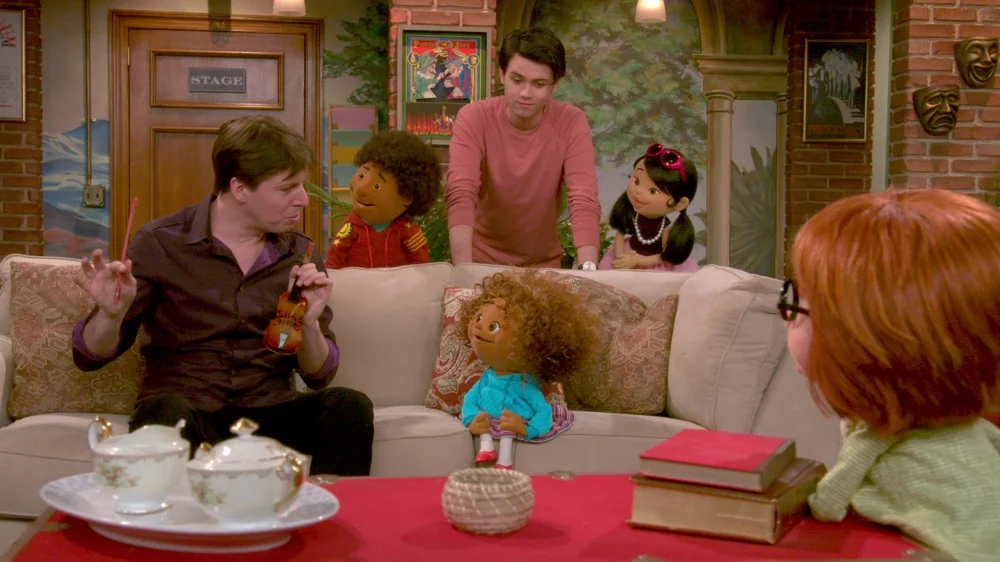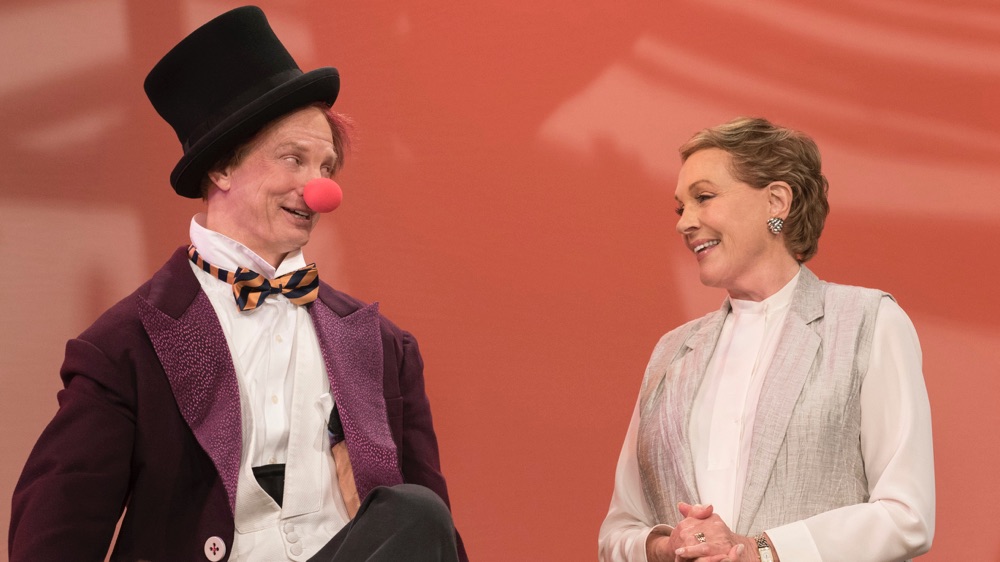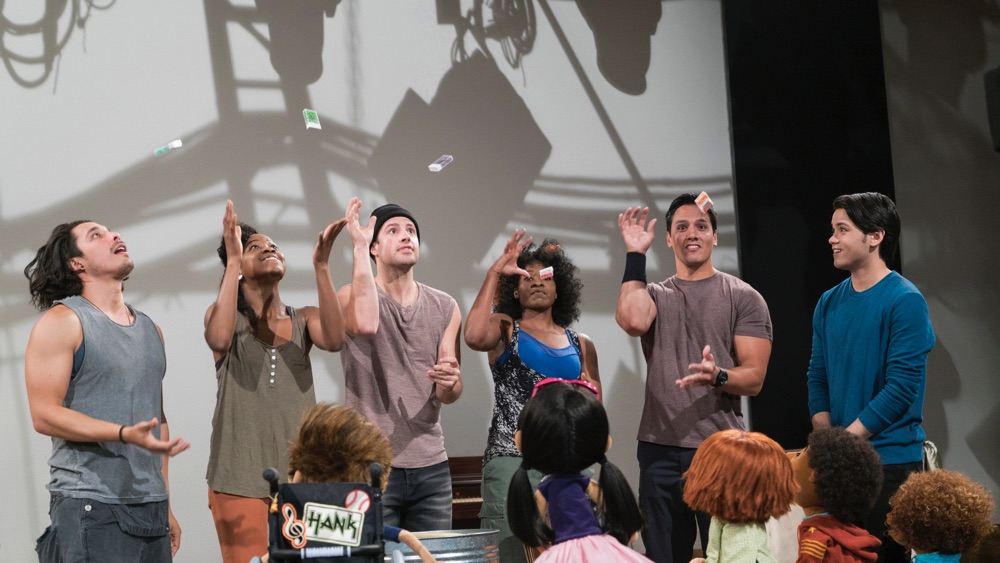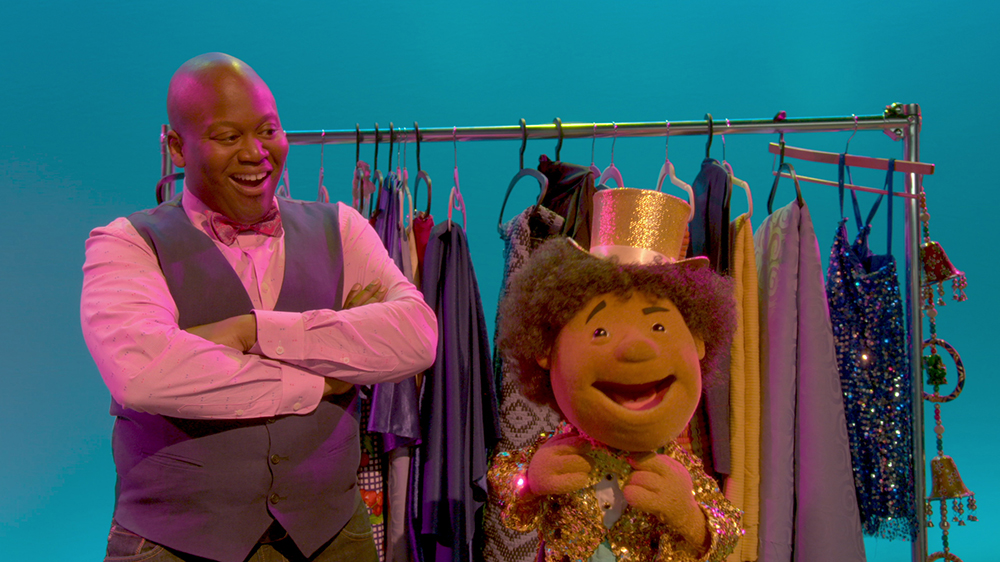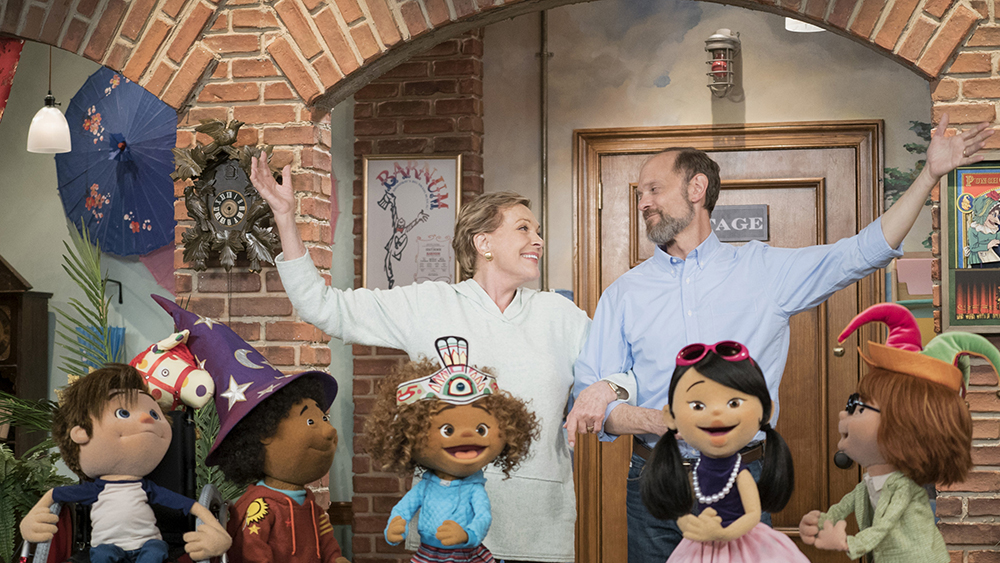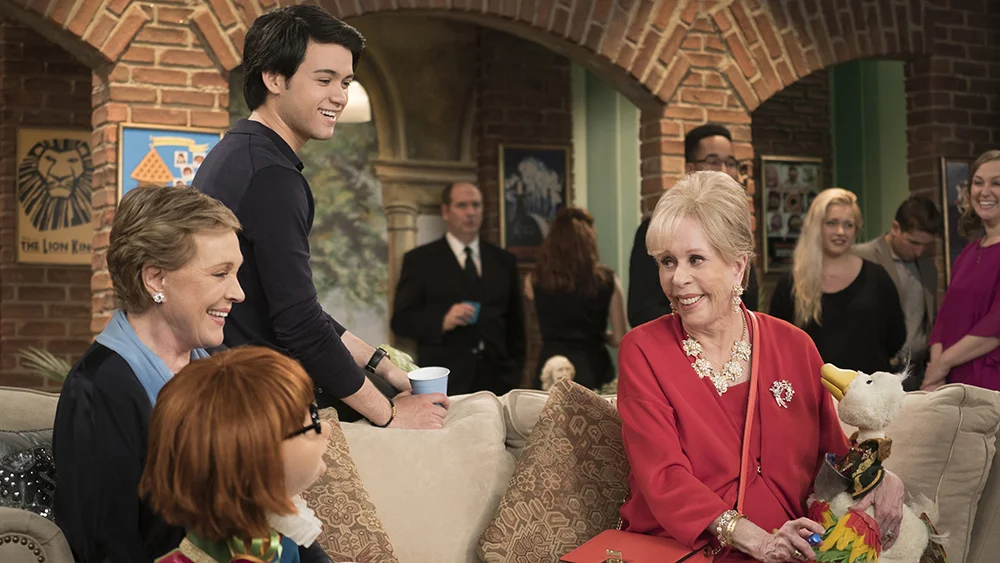Julie's Greenroom
ABOUT THE SHOW · CHARACTERS · GUEST STARS · CAST & CREW · RESOURCES
Episode 108: Quacktice Makes Perfect
Joshua Bell teaches the Greenies the importance of practice as they learn how to perform music together.
Featured Art: Orchestra
Musicals need music, and the best get theirs from a live orchestra. Joshua Bell stops by to teach Fizz about playing the violin, and the Greenies about playing music as a team.
There’s an old adage about Carnegie Hall, a famous concert hall in New York. A lost bystander asks a musician, “How do you get to Carnegie Hall?” The musician replies: “Practice.” Joshua, who himself has performed there, explains to Fizz that playing an instrument requires practice. It’s important to stress to young orchestra members that success won’t happen overnight: most orchestra musicians practice dozens of hours a week.
Orchestras are comprised from four main families: Strings, Woodwinds, Brass, and Percussion. Each family contains several instruments. For example, the strings family contains violin, viola, cello, and bass. The Orchestra is lead by the conductor, who uses a wand to direct volume and tempo. Volume determines how loud the music is played, whereas tempo determines how fast.
There are over a thousand symphony orchestras in the United States, scattered across cities and schools. And even though the musicians mainly play classical music, orchestra performances don’t have to feel dated. Many symphony orchestras have begun adding contemporary music to their repertoire, such as popular film or TV scores. After all, some of those orchestras were hired to record the music for the score in the first place!
Guest Star
With a career spanning more than 30 years as a soloist, chamber musician, recording artist and conductor, Joshua Bell is one of the most celebrated violinists of his era. An exclusive Sony Classical artist, Bell has recorded more than 40 CDs since his first LP recording at age 18 on the Decca Label, garnering Grammy, Mercury, Gramophone and Echo Klassik awards in the process. His discography encompasses much of the major violin repertoire as well as ground-breaking collaborations across multiple genres with artists from the worlds of Pop (Sting, Josh Groban), Jazz (Chick Corea, Branford Marsalis), Bluegrass (Edgar Meyer, Bela Fleck) and Film (including John Corigliano’s Oscar-winning soundtrack, The Red Violin.
Named the Music Director of the Academy of St Martin in the Fields in 2011, he is the only person to hold this post since Sir Neville Marriner formed the orchestra in 1958.
A dedicated arts education advocate, Bell participated in President Obama’s Committee on the Arts and the Humanities inaugural cultural mission to Cuba. He is involved in Turnaround Arts, a signature program of the President’s Committee on the Arts and Humanities and the John F. Kennedy Center for the Performing Arts. He also serves on the board of Education Through Music.
Born in Bloomington, Indiana, Bell received his first violin at age four and at 12 began studying with Josef Gingold at Indiana University. At 14 Bell began his rise to stardom, performing with Riccardo Muti and the Philadelphia Orchestra, and at age 17 making his Carnegie Hall debut.
Perhaps the event that helped to transform his reputation from musicians’ musician to household name was his incognito performance in a Washington, DC metro station in 2007. Ever adventurous, Bell had agreed to participate in the social experiment for a Washington Post story by Gene Weingarten which thoughtfully examined art and context. The story earned Weingarten a Pulitzer Prize and sparked an international firestorm of discussion.
Two of Joshua's favorite charities include Education Through Music and Turnaround Arts. Find Joshua online at joshuabell.com and on Facebook, Twitter, and Instagram.
Virtual Visit
Idyllwild Arts Foundation’s mission of “changing lives through the transformative power of art” expresses the global vision of its founders right after the Second World War. They dreamt of a secluded place where people of all backgrounds would share their experience the arts, which they thought provided “the best common ground for friendly cooperation among the peoples of the world.”
Today, Idyllwild Arts Academy, the only residential arts high school west of the Mississippi, enrolls over three hundred students from the U.S. and thirty other countries. Each of these talented and passionate young people specializes in Music, Dance, Theatre, Visual Arts, Film & Digital Media, InterArts/Fashion Design, or Creative Writing.
In the afternoon the students receive intensive training in their chosen arts disciplines from professional artists. In the morning the academic faculty teaches a challenging college-prep curriculum that emphasizes creativity and treats subjects not as collections of facts for memorizing, but as networks of questions for exploring.
Our students also teach one another, bringing their hearts and minds and tireless curiosity and sharply different perspectives to their education. They develop lifelong friendships with people who look and sound nothing like themselves, while being constantly enriched by the awareness that the same work of art can make radically different impressions on different sets of eyes or ears.
The breathtaking mountain campus remains a haven for artists during the Academy’s summer break. From June to August, the Idyllwild Arts Summer Program’s three hundred masterful artists settle in among the pines and cedars to teach families and individuals of all ages and skill levels. Hands-on classes feature dance, film, music, theatre, visual arts, and more, while workshops in Native American art forms offer deep immersion in Native American culture.
During both the Academy year and the summer, lives are changed at Idyllwild Arts.
Warm Up Game: The Boom Boom Wah Wah Game
The orchestra has so many instruments, it’s hard to keep track of them all. That’s why Gus has the Greenies play the Boom Boom Wah Wah game!
You can play Boom Boom Wah Wah along with the Greenies, or just by yourself. Name an instrument in the orchestra, then imitate the noise it makes. The orchestra has four main subgroups: Brass, Percussion, Woodwinds, and Strings. Each of those has several instruments within. After all, some orchestras have as many as 100 players.
Here are the examples the Greenies use:
What makes a boom boom boom-y sound? The drums they say, so pass it around!
We feel the music – boom boom boom (x2)
What makes a wah wah wah-y sound? The trombone I say! So pass it around!
We feel the music – wah wah wah (x2)
What makes a plink plink plink-y sound? The piano I say! So pass it around!
We feel the music – plink plink plink (x2)
What makes a toodle-oodle-oo sound? The flute I say! So pass it around!
We feel the music – toodle-oodle-oo! (x2)
What makes a zoom zoom zoom sound? The bass I say! So pass it around!
We feel the music – zoom zoom zoom! (x2)
What makes a screech screech screech sound? My violin I say! So pass it around!
We feel the music – screech screech screech! (x2)
Follow along with the Greenies, or do it on your own – there were plenty of orchestra instruments the Greenies didn’t get to. Try to think of a few!
